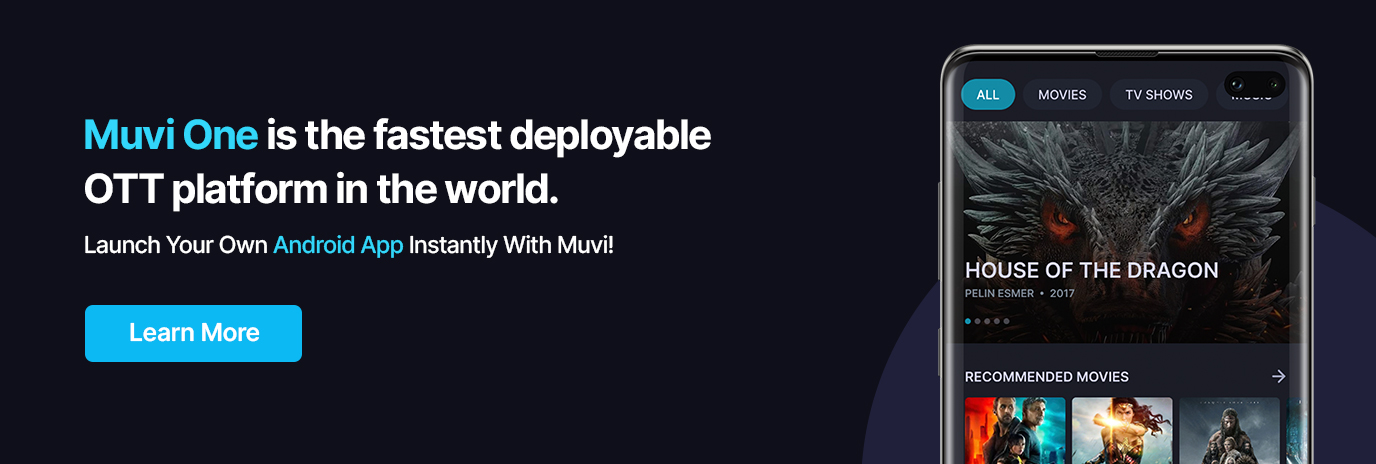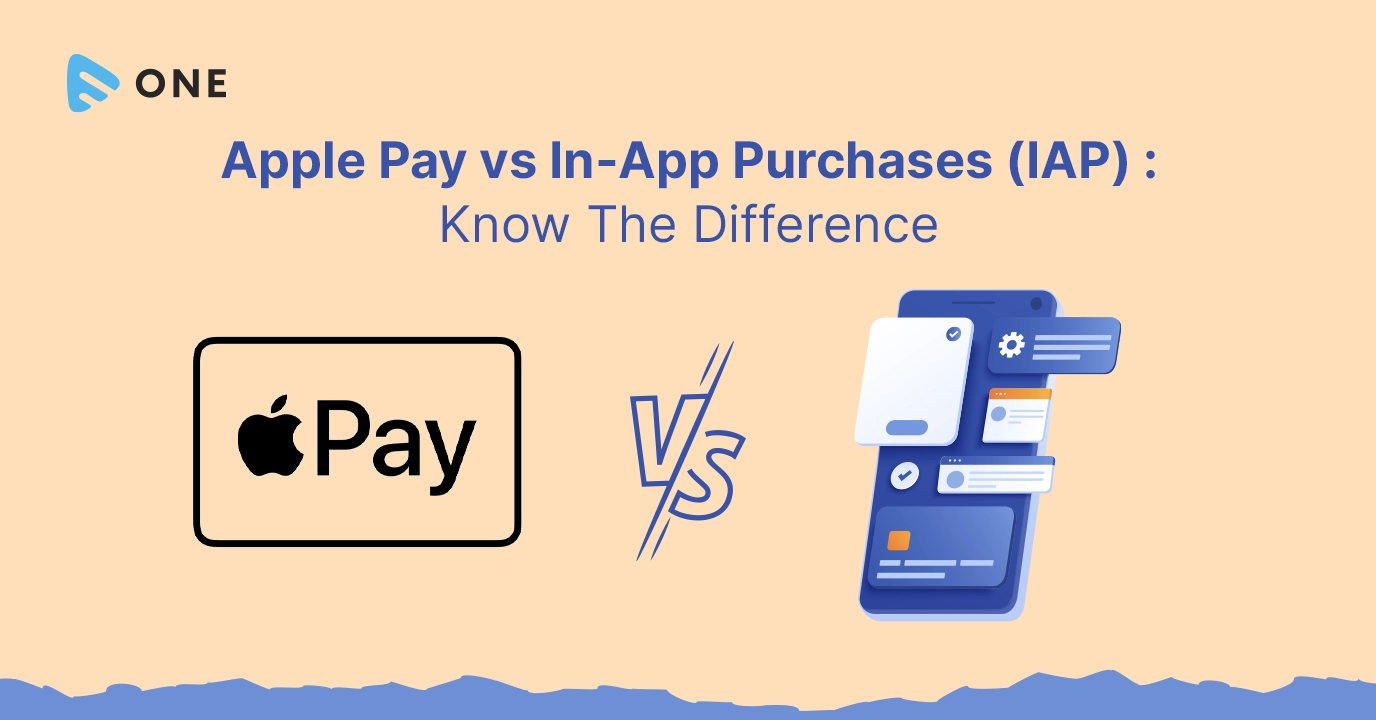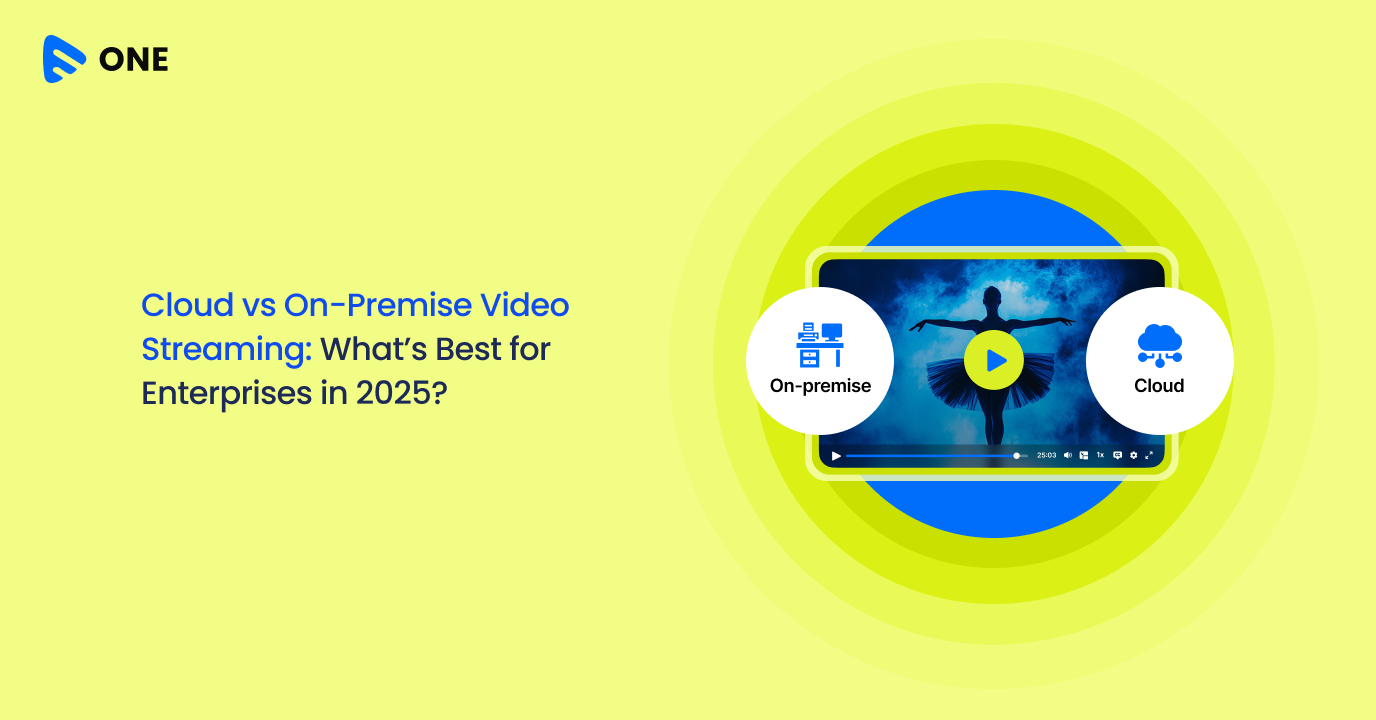If you are an iOS or tvOS streaming app developer, you must be familiar with In-App purchases and Apple Pay. Wait, No? Then, read this blog, as we are going to tell you what is Apple Pay, what is In-App Purchases or IAP, and how they differ from each other. Let’s start with Apple Pay.
What is Apple Pay?
If you go to an Apple store intending to buy a new Mac, and then realize you have not brought your wallet or cards, what will you do? Well, if you live in a country that supports Apple Pay, then you can simply pay using your iPhone.
Apple Pay is a secured digital payment and wallet service offered by Apple. In short, for a consumer, it is just like the UPI payment system of India, but technically it is a bit different. It functions based on an NFC chip that is built-in within the iPhones. It was first launched in 2014.
Apple Pay can be used for real monetary transactions in online purchases, e-commerce, Apple’s partner stores, and many other places. It is just like using your mobile or smartwatch in place of cash or card.
Where Can It Be Used?
Apple Pay is an online payment app, currently available in around 69 countries of the world, including the following countries:
United States | United Kingdom | Hong Kong | Switzerland |
Australia | Canada | China | Singapore |
France | Russia | Spain and Morocco | Taiwan |
Ireland | Italy | Macau | Japan and South Korea |
Kazakhstan | Germany | New Zealand | Poland |
Belgium | Denmark | Finland | Sweden |
Lithuania | Malta | UAE | Brazil |
Ukraine | Liechtenstein | Portugal | Norway |
Saudi Arabia | South Africa | Croatia | Georgia |
Austria | Czech Republic | Iceland | Chile |
Bahrain | Hungary | Luxembourg | The Netherlands |
Bulgaria | Belarus | Serbia | Mexico |
Cyprus | Estonia | Greece | Latvia |
Romania | Slovakia | Slovenia | Israel |
Qatar | Palestine | Azerbaijan | Costa Rica |
Colombia | Argentina | Peru | Moldova |

How Does It Work?
Apple Pay usually uses Face ID or Touch ID for authentication. Also, the application uses the “Tokenization” method to keep your credit card numbers safe. As said previously, Apple Pay works with the help of an NFC chip pre-installed within iPhones and smartwatches. Hence, it can work with any store that accepts NFC-based contactless payments.
So, any new user would first need to add and verify their credit or debit card details, which will be used to deduct or add money to and from their bank accounts. When the users visit any store accepting Apple Pay, they just need to hold out their iPhones or Apple watches near the NFC-based payment system to complete the transaction. You don’t usually put any PIN for such transactions. However, you will be authenticated using your Touch ID.
Some Use Cases
Apple Pay can be used for multiple purposes, including:
- You can use Apple Pay to pay your invoices and bills after shopping, dining, or spending for any other purpose at any store, restaurant, pharmacy, hospital, or any other facility that has NFC-enabled payment systems.
- You will be able to make online payments on e-commerce websites or any other website that supports Apple Pay.
- In the US, a person can send money to another person through Apple Pay.
Which Devices Support Apple Pay
Apple Pay is currently supported by the devices given below:
iPhone 6, 6s, 6 Plus, 6s Plus | iPhone SE | iPhone 7, 7 Plus |
iPhone 8, 8 Plus | iPhone X, XS, XS Max | iPhone XR |
iPhone 11, 11 Pro, 11 Pro Max | iPhone 12, 12 mini, 12 Pro, 12 Pro Max | iPhone 13, 13 mini, 13 Pro, 13 Pro Max |
iPhone 14, 14 Plus, 14 Pro, 14 Pro Max | iPhone 15 series | Apple Watches |
Apple Pay can also be used over Macs and iPads using Touch ID and Face ID authentication.
How Much Will It Cost You?
Apple Pay does not have any usage fees. It is just a medium of payment that does not charge any additional fees.
What Is IAP: In-App Purchases?
Nowadays, many apps offer paid features, additional paid content, or other premium services that need to be bought separately. This additional content can be bought using the in-app purchases feature. Not all apps will offer in-app purchases. However, streaming and gaming apps usually offer a lot of in-app purchase options.
Sometimes, premium ad-free plans are also included as in-app purchases. There are many more applications of IAP. But the point is, it is completely different from Apple Pay. Because Apple Pay deals with real-world monetary transactions, while IAP refers to purchases that occur within an app. Let’s check out how IAP actually works and where it is used. For businesses looking to optimize their spending and procurement processes, utilizing top procurement software can also enhance overall efficiency. Let’s check out how IAP actually works and where it is used.
Where Can IAP Be Used?
Whenever you download an app from the app store, you might have noticed “In-App Purchases” written beside the “Get” button for many apps. This symbol signals that these apps offer content, services, features, or plans that can be purchased while using this app.
Take for example, you have downloaded a music app that offers free music usually, but the condition is that you need to listen to ads in between. Now, this app might roll out a plan for its users, using which they can access ad-free music. This plan will come under in-app purchases.
Similarly, in the case of games, we often buy costumes and many other items for our characters, all of which are examples of in-app purchases.
How Does It Work?
Every app will showcase the additional content, plans, or features available for IAP somewhere within the app. The users can choose which item they want to purchase, and proceed for payments. Many apps have a wallet system where you can pre-load some amount of money. While in others, you might have to use your credit cards.
 Apple Pay vs IAP – What’s The Difference?
Apple Pay vs IAP – What’s The Difference?
Let’s take a look at the categorical comparison between Apple Pay vs IAP, to understand the difference between the two more clearly.
Parameters | Apple Pay | In-App Purchases |
Purpose of Use | Apple Pay is used for real-world monetary transactions. | IAP is used for purchasing extra content, services, and items within an app. |
Mode of Operations | Apple Pay uses built-in NFC chips to transact via pre-added credit and debit cards. | The users need to upload money into their wallets or use their credit cards. |
Cards Needed? | Need to be added by users before they start using the app. | Needed during money upload or direct purchase via cards. |
Where Can Be Used? | Any store, pharmacy, or outlet that has NFC-enabled payment systems. | Within the apps that are offering NFC. |
What Can Be Bought? | Anything you want (all real-life objects). | Any extra content, NFTs, plans, services, etc. offered by the app. |
Money Transfer Possible? | Yes, in the US. | No. |
How Muvi Accommodates Both
Muvi supports multiple payment gateways that allow you to accept payments through multiple payment modes including UPI payments and apps like Apple Pay.
Also, our apps always allow you to enable in-app purchases through which your users can buy additional content, buy movies for one-time view, and do many more things. We offer this feature for all our mobile and TV apps including Android Apps, Android TV Apps, iOS Apps, tvOS Apps, Samsung Tizen Apps, Roku Channels, LG WebOS Apps, and many more!
To Sum Up
Apple Pay is an online payment system using which you can pay in any store that supports NFC-based payments. It has nothing to do with in-app purchases. Apple Pay is meant for real-world transactions. On the other hand, IAP or in-app purchases are meant for purchasing NFTs, extra content, and plans from within an app, which can used within that app.
Streaming platforms nowadays support both of them. If you are looking to develop a similar streaming platform, then you must try Muvi One. Muvi One is an all-in-one no-code streaming solution using which you can develop your own streaming platform with 100+ industry-leading features without writing a single line of code. So, why wait? Start your 14-day free trial today!



















Add your comment